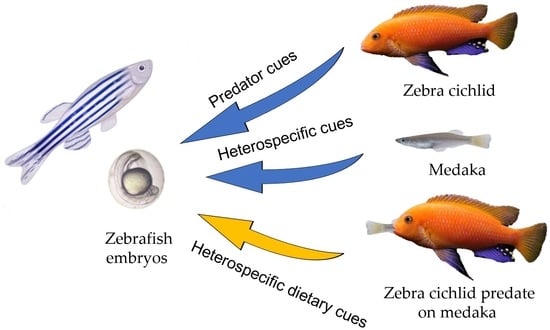Chemical Cues Released by Predators’ Consumption of Heterospecific Prey Alter the Embryogenesis of Zebrafish
Abstract
Share and Cite
Lin, A.; Li, Y.; Yan, Z.; Zhang, H.; Jiang, B.; Chen, J.; Wang, D.; Wang, H.; Li, X.; Lu, Z.; et al. Chemical Cues Released by Predators’ Consumption of Heterospecific Prey Alter the Embryogenesis of Zebrafish. Fishes 2024, 9, 95. https://doi.org/10.3390/fishes9030095
Lin A, Li Y, Yan Z, Zhang H, Jiang B, Chen J, Wang D, Wang H, Li X, Lu Z, et al. Chemical Cues Released by Predators’ Consumption of Heterospecific Prey Alter the Embryogenesis of Zebrafish. Fishes. 2024; 9(3):95. https://doi.org/10.3390/fishes9030095
Chicago/Turabian StyleLin, Ainuo, Yaxi Li, Zhi Yan, Huilin Zhang, Baozhen Jiang, Jingjing Chen, Derui Wang, Huan Wang, Xiaodong Li, Zhen Lu, and et al. 2024. "Chemical Cues Released by Predators’ Consumption of Heterospecific Prey Alter the Embryogenesis of Zebrafish" Fishes 9, no. 3: 95. https://doi.org/10.3390/fishes9030095
APA StyleLin, A., Li, Y., Yan, Z., Zhang, H., Jiang, B., Chen, J., Wang, D., Wang, H., Li, X., Lu, Z., & Li, K. (2024). Chemical Cues Released by Predators’ Consumption of Heterospecific Prey Alter the Embryogenesis of Zebrafish. Fishes, 9(3), 95. https://doi.org/10.3390/fishes9030095






